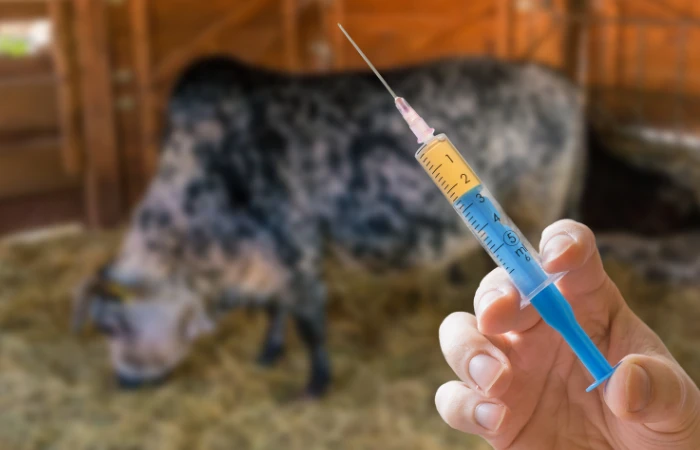The U.S. Food and Drug Administration (FDA) still lacks critical data on how antibiotics are being used on farms raising animals for food, despite the threat antibiotic resistance poses to public health. Experts argue the agency has dragged its feet on gathering readily available information that could shed light on potential overuse, such as records held by feed mills on the antibiotics being mixed into animal feed.
“At feed mills, when employees mix antibiotics into feed, they are required to hold onto the prescriptions for two years. Wallinga and others have long been lobbying the FDA to collect and share that data,” the original article stated. However, the FDA maintains it reviews some feed mill records during inspections but doesn’t systematically collect or aggregate the data.
FDA spokesperson Veronika Pfaeffle said collecting feed directives wouldn’t “provide a clear or complete enough picture of antibiotic use.” The agency argues it would still need to collect data on other antibiotic delivery methods to livestock, “such as medicated drinking water, injectable, intramammary, other oral dosage forms.”
Public health advocates firmly disagree, arguing collecting feed mill data would significantly advance understanding of on-farm antibiotic use, even if the picture remained incomplete. “If collecting the data from all the feed mills is too taxing, they could focus on three states – California for beef, Arkansas for chickens, and Iowa for swine – and analyze use,” said Laura Rogers of the Antibiotic Resistance Action Center. “It would not be the full picture, but it would be pretty good indicators of how and why the drugs are being used.”

Indeed, the FDA’s own limited pilot studies on antibiotic use show feed accounts for the majority of use in key livestock sectors. In cattle feedlots studied, nearly 80% of antibiotics were given in feed. At large hog farms examined, about 70% of antibiotics went into feed.
“I don’t believe that people are actually purchasing large amounts of feed and then just dumping it on the ground. It’s really good data,” said Steve Roach of Food Animal Concerns Trust, who has collaborated for years in pushing the FDA to tap this data source.
Instead of collecting feed mill data, the FDA has focused on creating a voluntary system for animal agriculture companies to provide information on how antibiotics are being used on farms. The independent Reagan-Udall Foundation for the FDA was commissioned to design this tracking system based on feedback from various stakeholders.
But public health advocates argue a voluntary system is unlikely to produce a reliable, comprehensive picture of on-farm antibiotic use. They warn producers overusing antibiotics will be less inclined to opt into a voluntary reporting system, skewing any results. “It will end up giving you a very distorted picture of how antibiotics are used on farms,” Roach predicted.
The Reagan-Udall Foundation acknowledges looking at the tracking systems implemented in California and Maryland under state laws mandating antibiotic use reporting from farms. But the foundation’s chief operating officer said the focus remained on designing a voluntary federal system based on FDA’s directives, involving outreach to animal agriculture groups expected to contribute data.
Meanwhile, early evidence from state reporting efforts spotlight the limitations of voluntary data collection on antibiotic use. In 2022, Maryland authorities requested use data from over 1,000 veterinarians, receiving submissions from just 7. While providing some useful annual benchmarks, a former state official conceded the data are unreliable given the lack of comprehensive participation and enforcement around reporting.
Ultimately, experts argue reliably tracking on-farm antibiotic use will require some form of mandated reporting – whether directly from feed mills or large-scale livestock operators. Absent more decisive federal action, states may need to take the lead in pushing for greater transparency around antibiotic use in animal agriculture.
More To Discover
- FDA Finally Moves to Ban BVO, a Controversial Soda Ingredient (Complete List of Affected Sodas Included)
- How Embracing an Eco-Friendly Lifestyle Can Change Your Life for the Better
- People Assume Sustainable Food and Healthy Food Are The Same Thing; Are They?
- Glitter Ban: Sparkling Menace to Microplastic Pollution Crisis
Why This Matters: The Rise of Drug-Resistant ‘Superbugs’
At first glance, the debate over how the FDA tracks antibiotic use on farms may seem like inside-baseball bickering. But the policy fight has momentous public health consequences, considering the global threat posed by antibiotic-resistant “superbugs.”
Misuse and overuse of antibiotics in animal agriculture fuels antibiotic resistance. Bacteria evolve to survive exposure to the life-saving drugs. Over time, human infections that were once easily treatable with antibiotics become impervious to standard treatments. Common medical procedures we take for granted today could again become fraught with peril.
Already, the Centers for Disease Control estimates over 3 million antibiotic-resistant infections occur annually in the U.S., causing nearly 50,000 deaths. The economic burden exceeds \$20 billion per year in direct healthcare costs and lost productivity. Absent decisive action, the annual death toll globally could leap to 10 million by 2050, exceeding deaths from cancer.
Central to the policy response is tracking precisely how antibiotics are being administered to livestock. Transparency around use practices enables accountability and responsible stewardship of vital drugs. But at present, as one Johns Hopkins Center for a Livable Future report concluded, “We know more about how many livestock exist in the United States than about how many antibiotics they consume.”
That knowledge gap stymies efforts to fully assess the links between use patterns and rising resistance. It also obscures understanding of why producers rely on antibiotics – sometimes excessively – and how practices could be improved to reduce reliance on medications critical for human health.
In short, comprehensively tracking antibiotic use on farms is crucial to averting the doomsday scenario of a post-antibiotic world – and the FDA so far has fallen short despite having accessible data sources at its fingertips. Without a clearer picture of current use fueled by mandated transparency measures, the U.S. can’t fully confront the connected threats of antibiotic misuse in animal agriculture and superbugs resistant to lifesaving medicines. The publishing and analysis of national usage data could incentivize livestock producers to reassess how they administer antibiotics. But absent such pressure and accountability, critical progress on antibiotic stewardship may continue to lag even as the countdown ticks on the utility of miracle drugs that underpin modern medicine.
The FDA’s role in tracking and regulating antibiotic use in farms isn’t just about agricultural practices but is intrinsically linked to public health, food safety, and the sustainability of effective medical treatments. It’s a matter that touches every consumer, emphasizing the need for awareness and action at all levels, from making policy to personal consumption choices.















